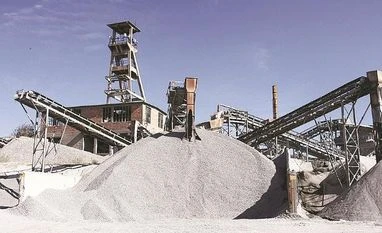In February, realisations across most regions have remained flat with some areas even witnessing a decline.
Channels checks by IIFL indicated that the India average cement price is down 1.4 per cent in February compared with January 2018. Most of this decline occurred in the first fortnight of February.
Analysts said this was the second time in a decade that the all-India average cement prices had declined versus the January rates (the last time it was in 2015 when prices were weighed down by lower volumes, which fell 0.5 per cent in Q4 FY15).
Volume growth, however, was supportive in February. Ban on sand mining, especially in Rajasthan, Uttar Pradesh, Bihar and Tamil Nadu, was one of the key reasons responsible for a lag in cement demand.
Sand issues in Tamil Nadu have been resolved and will help South India clock better volumes. Uttar Pradesh, too, has seen some improvement. The Street is awaiting resolutions in Rajasthan and Bihar.
Analysts such as Binod Modi at Reliance Securities expect the resolution of sand mining issues in Tamil Nadu to propel growth in demand from the current month onwards. They said there has been a decent improvement in trade sales, mainly led by a pickup in housing activities in rural and semi-rural areas.
Weak realisations have restricted increased in profitability, given the cost pressures in the last few quarters due to higher fuel and logistic costs. Players such as UltraTech had seen per tonne profitability at Rs 717 in the December quarter against Rs 949 in the September 2017 quarter. Shree Cement’s per tonne profitability came in at Rs 1,057 in the December 2017 quarter against Rs 1,133 in the preceding quarter.
Though rising volumes can offset some pressure as per tonne fixed costs decline, realisations hold key for earnings. Analysts at IIFL said while higher input costs, increased competition and increased stringency in overloading restrictions were likely to put some pressure on margins, the higher-than-expected volume growth would partially offset it.
Following the pressure on realisations witnessed in February, the Street will watch out for any progress in March. Although a positive pricing trend is expected in March, Modi of Reliance Securities said most companies would try to push up sales volumes. He thus expects realisations to improve only from April.
To read the full story, Subscribe Now at just Rs 249 a month
Already a subscriber? Log in
Subscribe To BS Premium
₹249
Renews automatically
₹1699₹1999
Opt for auto renewal and save Rs. 300 Renews automatically
₹1999
What you get on BS Premium?
-
Unlock 30+ premium stories daily hand-picked by our editors, across devices on browser and app.
-
Pick your 5 favourite companies, get a daily email with all news updates on them.
Full access to our intuitive epaper - clip, save, share articles from any device; newspaper archives from 2006.
Preferential invites to Business Standard events.
Curated newsletters on markets, personal finance, policy & politics, start-ups, technology, and more.
Need More Information - write to us at assist@bsmail.in
)